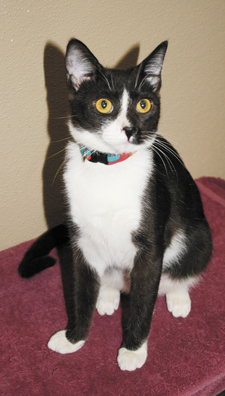
MARCH 28, 2012
Mild winter, low rainfall may bring wildlife into urban fringe areas this spring
Tips for learning to live with wildlife and avoid conflict
 PHOENIX — Arizona’s mild winter and exceptionally low rainfall have wildlife on the move, especially in urban areas that are on the fringe of natural habitat. Greenbelts, yards and golf courses are particularly attractive as they provide an easier meal and shelter areas.
PHOENIX — Arizona’s mild winter and exceptionally low rainfall have wildlife on the move, especially in urban areas that are on the fringe of natural habitat. Greenbelts, yards and golf courses are particularly attractive as they provide an easier meal and shelter areas. “Green areas bring in the small mammals like rabbits, which in turn attract coyotes and javelina when the desert is dry and lacks adequate food resources,” said Darren Julian, an urban wildlife specialist for the Arizona Game and Fish Department’s regional office in Mesa. “Negative encounters with wildlife are almost always associated with a food source, so it’s important to work with your neighbors to discourage wildlife from coming into close proximity to people.”
Coyotes and javelina are the large animals most frequently seen in populated areas. They are usually timid and run away if challenged, but they can pose a risk to people once they become comfortable around humans, usually as a result of feeding or indifference. It is also important to use precaution in the spring when many wildlife species breed. Animals with young can be very territorial and defensive, and may bite or otherwise attack humans when they feel their young are threatened. Habituated animals such as coyotes and javelina lose their natural fear and learn to see humans, their yards and their pets as food sources and safe havens.
People have a responsibility to help keep wildlife “wild.” While wild animals are already present in urban areas, they should not be allowed to become comfortable with human presence. Residents and visitors are encouraged to remove all potential food sources and make wildlife feel unwelcome when they are spotted in urban areas. The following tips will help minimize encounters:
Do not feed wildlife.
Keep birdseed and water sources off the ground and out of reach.
Store garbage inside and place trash containers outside at the last possible time on day of pickup.
Feed pets inside or remove uneaten pet food between feedings.
Keep pets indoors, in a secure outdoor enclosure with a roof, or on a leash.
Supervise small children outdoors.
If you see a coyote or javelina, discourage it from the area by using aggressive gestures with your arms and legs, yelling, shaking a can filled with pennies, or spraying it with a hose or “SuperSoaker” filled with diluted ammonia.
Trim back plants and bushes around the house to prevent hiding or resting places.
Install outdoor lighting.
Use fences and walls at least 6 feet high, with the bottom buried a few inches underground.
Eliminate a coyote’s ability to get over the top of a fence or wall by installing barbed wire, electric wire, or a pipe that spins around a wire.
For more information or questions on reducing wildlife conflicts in your area, visit the department’s website at www.azgfd.gov/ urbanwildlife.
For Valley homeowners' associations that would like to schedule a nuisance wildlife presentation at their next homeowners' association meeting, contact the Game and Fish Mesa regional office at 480-981-9400.



